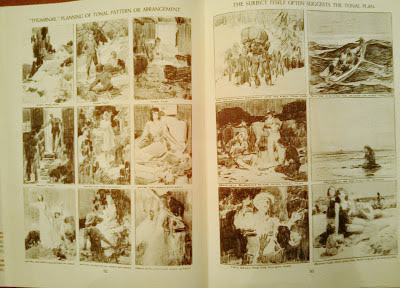 |
| Escarpment View Acrylic 16x20 |
Cathy and I have been in Ontario for May and June visiting friends and family and enjoying our grand children. I have tried to spend a part of each morning working in a small make-shift studio - basically a plein air set up. I also spent a lot of time sketching with pen and pad.
In spite of the limitations of my "little studio" I met some gallery commitments and then played for the past six weeks with a variety of different approaches using small panels- mostly 11x14. I spent the most time working on black gessoed boards and roughed-in using the Montana Acrylic markers . Once the plan was in place I rubbed in a transparent - in the case below Diox Purple to create a dark but coloured undercoat.
Some of the acrylic pieces - most done on black gesso as above.
In the past week I got out my water mixable oils for the first time since November. These were all 8x10 or 6x8 and also on black gesso.
I think every workshop leader and instructor I have had over the years has encouraged drawing - as much and as often as possible. I have known this and have drawn all along but the longer I paint the more time I am spending drawing and I am finally convinced of its benefit.
For my purposes drawing is about improving observation, thinking about design choices and recording in a format useful for future reference. Its not about making a pretty picture. I have been taught to use charcoal, a variety of pencils, many makes and shapes of markers and on sketch pads from large to small, cheap to expensive. Every instructor has his or her own preference.
Over this past two months I think I have finally settled on what I enjoy and what works for my needs: a fine Sharpie Pen on a 5x7 inch coil bound pad. The combination is cheap, portable and easy. I like the easy glide of the pen and am becoming increasingly comfortable using it for quick sketches. The trick is learning the "language" of communicating values through cross hatching .
I have been making larger landscape sketches and many small thumb nails, Some of the paintings above were made from those ink sketches and no other reference. That's a great exercise.
I also had great fun sketching during my granddaughters soccer games and my grandsons baseball games. I made up to five pages of quick sketches of kids on the move during each of many games. Useful as a gesture exercise for plein air work. Click on the pages to enlarge.
That's it from Ontario. On the road tomorrow heading back to Vancouver Island in our RV.
All the best.










